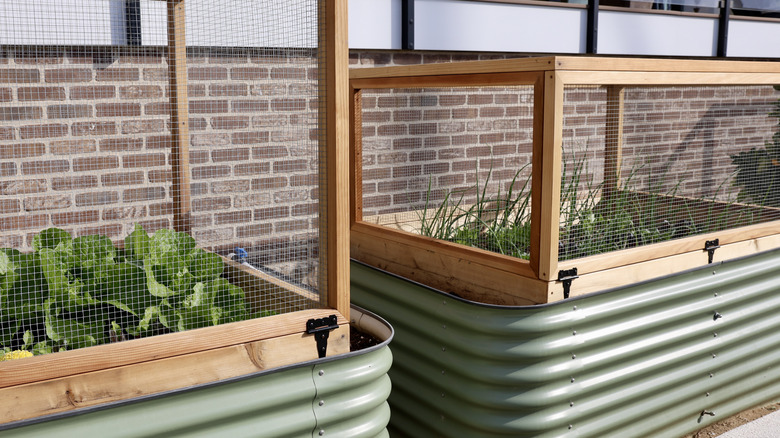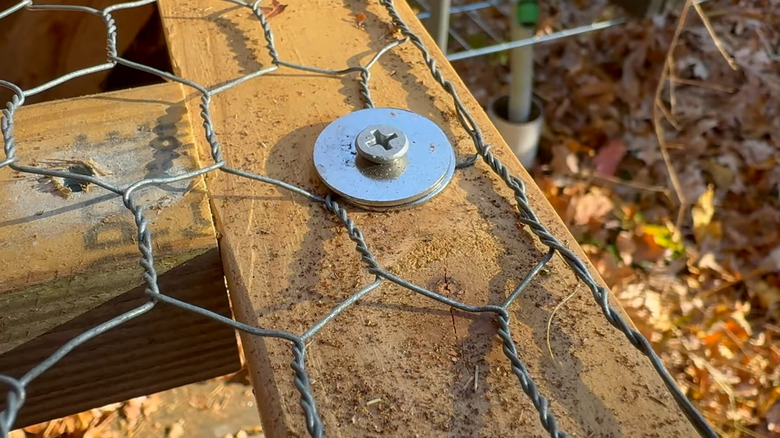How To Attach Chicken Wire To Wood Without Staples
We may receive a commission on purchases made from links.
Staples may seem like the obvious choice for hanging up chicken wire, but they do come with some drawbacks that make alternative methods worth considering. Over time, staples can come loose and fall out. On the other end, they may hold too tight and end up ripping the wire during removal. Chicken wire and hardware cloth are generally very durable, but being able to reuse them can prove difficult when the staples have dug in and torn the edges. If you're throwing together a temporary structure, staples aren't the best choice if flexibility and easy removal are a priority.
Aside from usability, staple-free choices can provide a more secure hold. Traditional staples limit your ability to reposition the wire if adjustments are needed later, the only option will be to pull them out and start fresh. Choosing something more adaptable ensures a longer life for the wire itself. This is extra important for outdoor projects exposed to weather, where even galvanized staples can quickly rust and create weak points which compromise the wire's integrity as well as the wood it's attached to. With so many ways to repurpose used chicken wire, moving away from staples will help save more of the material.
Staple-free solutions for chicken wire
One of the most reliable methods involves screws and washers. Place the chicken wire where needed then drive screws through the washers to clamp the wire firmly against the wood. This creates an even pressure across the mesh and it can be removed quickly and easily when it's time to replace the wire. If you'll be using this structure outside, make sure to use stainless-steel screws to help prevent rust. Although there are some disadvantages to using chicken wire for fencing, this method will hold better than staples for permanent or semi-permanent structures like chicken coops, where a strong hold is important.
If you're working on something a little more temporary, UV-resistant zip ties offer great strength and convenience. Thread the ties through the wire's mesh and around the wood, then tighten for a secure fit. Unlike staples, zip ties allow for quick adjustment and can be cut off without damaging the wire. For animal enclosures, stainless-steel zip ties will provide a little more security against critters that might chew through plastic.
Another option would be to use wood battens or slats. A thin strip of wood screwed over the wire's edge will sandwich the whole thing in place. This will distribute the tension more evenly, ideal for large, permanent areas like garden fencing to help keep pests out. Whichever method you choose, hopefully they can save you a little money by helping increase the lifespan of your chicken wire.

